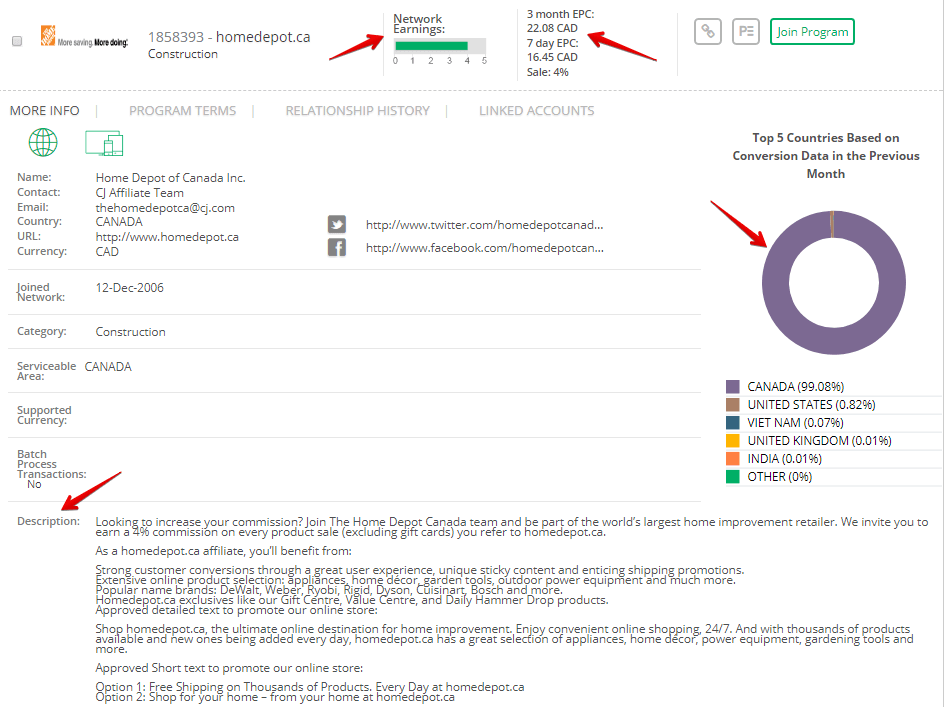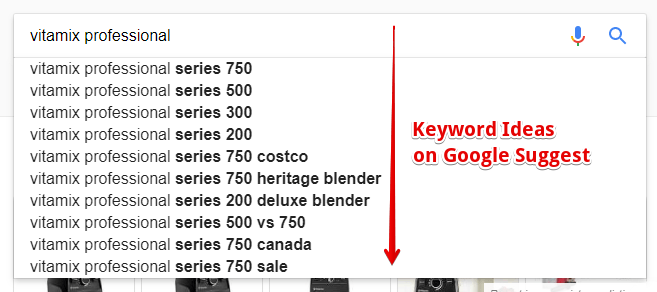
One of my favorite ways to search for a business niche is to see what’s being offered in affiliate networks. It gives an idea of what’s trending and what type of brands to promote for one’s site. That is exactly what I’ll be showing you today with the Commission Junction affiliate programs. So if you are a new blogger, this is one article that you wouldn’t want to miss.
What To Prepare Before Hand
By this, I am referring to the network, not the programs just yet. In order to ensure that affiliate links are used properly, almost all the networks will require applicants to provide a reference to their websites. It tells a lot about the level of your commitment as a publisher (aka affiliate marketer) and also shows advertisers whether your content is suitable for their product or services offers.
If you haven’t got a site yet, I would recommend using a custom domain build on a self-hosted WordPress. The diversity and flexibility of the platform will enable you to publish a lot of content that can be used to market affiliate products more efficiently.

After being accepted into the CJ Affiliate, remember to fill out the ‘business model’ column thoroughly under your network profile. This is a prerequisite to apply for any of the affiliate programs.
Now, let’s see how advertisers generally present their information on the network.
Understanding The Advertiser’s Information
In order to search for advertisers, you can either use the company’s name OR enter a broad keyword that is specific to that particular niche. For example, if you have a pet blog, you may want to use the keyword ‘pets’ or if you have a fitness blog, you can use the word ‘exercise’.
Search filters can help to refine the results further such as selecting a serviceable area (countries to which the advertisers provide goods and services), a specific product category and/or the type of currency. I usually just stick to a specific country and a product type since those two are the more important ones.
Typically, this is what an advertiser’s information would look like.

Out of that, the data that are most relevant to you as a niche marketer are;
Network earnings – Reflected in the scale of 1 to 5, this is a signal that tells how advertiser fares based on the volume of commissions paid as compared to other companies in the network.
EPC – Also known as average earnings per 100 clicks, this is a standard measurement in most affiliate networks that calculates an advertiser’s earnings over the span of 7 days and 30 days timetable. This rating is influenced by the amount of traffic received and illustrates the ability of the products/services to convert clicks into commissions.
Commission Rate – The amount of incentive a publisher receives from an advertiser for generating leads or sales through his/her website. Most company will state this on the fine print, but some will only be disclosed during the application process.
Cookie Duration – An affiliate cookie is a text file that is stored within a visitor’s browser when he/she follows a tracking link. The duration is, therefore, the amount of time the cookie will remain valid on the browser after they have clicked to the advertiser’s site OR when it is overwritten by another publisher’s cookie. The time frame could vary from anywhere between 1 to 60+ days.
Traffic Source – Most affiliate networks don’t provide this so it’s interesting that CJ shows where visitors are coming from for a particular advertiser. This statistic will give you a better idea about the demographics of your targeted audience and how to craft your promotion accordingly.
Advertiser’s Description – This is the information that you should read thoroughly as it describes the affiliate offers, program features and shipping policy in detail.
By understanding what each data represents, let’s see what are some of the high performing advertisers that are available for your niche.
How to Search for High Performing Advertisers
Not all company shines when it comes to affiliate marketing. Some are newcomers, some do better than the others and some probably don’t have the fund to continue with their affiliate programs. Even though CJ doesn’t reveal their top ranking advertisers like how ShareASale affiliate network does, there are a few signals that can lead you to them.
Based on the information that was shared earlier, we are looking for;
- A product/service that is relevant to your niche.
- A country that is relevant to your audience demographic.
- An advertiser with high network earnings (preferably 4 and above) and a fairly high EPC value. Just to give you a basic idea, here are the stats that I would consider as a high performing advertiser.

And this are the type of stats that I would avoid.

To save you some research time, I’ve compiled the top three advertisers (as of February 2018) for popular product categories (along with their commission rates), which I’ve filtered according to the network earnings. Any parameter is fine – I just thought that this is the most straightforward method.
Accessories
- Zappos – 7%
- Stuart Weitzman – 5%
- Stitch Fix – 4% and $25/lead
Art/Photo/Music
- Guitar Center – 3%-5%
- Stamps – $50/sale
- Blick Art Materials – 3%
Automotive
- Zoro – 4%
- The Tire Rack – 6%
- Edmunds – $5-$8/lead
Beauty
- SkinStore – 2%-8%
- Violet Grey – 12%
- L’Occitane – 2.5%
Books/Media
- The Wall Street Journal – $30/sale
- Barnes & Nobles – 2%
- eCampus – 5%-8% and $3/lead
Business
- Vistaprint – 3% – 16%
- Quill – 1%-5%
- Office Depot and Office Max – 0.5%-6%
Clothing and Apparel
- Zulily – 2%
- Vineyard Vines – 3%-6%
- Urban Outfitters – 5%
Computer and Electronic
- Newegg – 0.5%-1%
- Kaspersky Lab – 20%
- Dell Small Business – 1%-8%
Department Stores/Malls
- Sears – 2%-10%
- QVC – 1%-4%
- Hudson’s Bay – 4%
Education
- Rosetta Stone Language Software – 10%
- Discount School Supply – 4%
- ABC Mouse – $4/sale
Entertainment
- Way – 10%
- TicketNetwork – 12.5%
- Ticket Liquidator – 6%
Family
- Minted – 10% and $20/lead
- Buy Buy Baby – 1%-3% and $6/lead
- Ancestry – 10%-17.5%
Financial Services
- USAA – $25/sale or $1-$25/lead
- Turbo Tax – 5%-15%
- Life Lock Identity Theft – $8-$110/sale
Food and Drinks
- Home Chef – $10/sale
- Hello Fresh – $10/sale
- Thrive Market – $30/sale
Games and Toys
- ShopDisney – 2%
- Great Little Trading Company – 2%
- GameFly – 5%-10% and $15/lead
Gifts and Flowers
- ProFlowers – 10%
- Think Geek – 5%-9%
- Gift Card Mall – 1%-5%
Health and Wellness
- Weight Watchers – $10/sale
- Walgreens – 4%-8%
- Life Extension – 8%
Home and Garden
- Petco Animal Supplies – 5%-8%
- Home Depot – 4%
- Vitamix -3%
Online Services
- Verizon Fios – $45/sale
- GoDaddy – 10%-15% and $2/lead
- AT&T – $50/sale
Recreation and Leisure
- eHarmony – 65%
- Backcountry – 8%
- VaporDNA – 10%
Sports and Fitness
- Under Armour – 6%
- Nike – 1%-3%
- Columbia Sportswear – 8%
Travel
- VRBO – 2% and $20/lead
- TripAdvisor – 50%
- Priceline – 3% and $4/lead
Did you see any brands that you like? Then, sign up for the network and apply for the programs. Keep in mind that even though these are high performing advertisers, you still have to do your part in order to earn those commissions. That’s where an established website comes into play.
How to Promote Affiliate Products – Organically
Previously, I talk about publishing content as a way of promotion, but there’s more to that. Web content in the form of textual information is what attract internet readers in the first place. When they make sense and add values, people are more convinced to buy something online.
Therefore, think of your content as a funnel system. First, you need to capture their attention through the search queries, present them with relevant information through a blog and then direct them to the advertiser’s site for purchase using an affiliate link. In short, the construction of your content should look something like this;
Targeted keywords article > Product review (with affiliate link) > Advertiser’s site
Looking up the advertisers that you are interested will give you some ideas as to what type of product reviews to write about. For example, if you want to monetize from a food blog and thinks that Vitamix is a good product to promote, you may want to research on their blender series.
When publishing a title for a product review, it’s quite common to search for keywords that are already trending online. Most of the time, this can easily be found using the Alphabet Soup Technique on the Google search bar, as shown below.

Adding the word ‘review’ at the end of the selected keywords such as ‘Vitamix Professional Series 750 Review’ usually does the trick, but it doesn’t have to be that way all the time. As long as you have the main keywords somewhere in the title, any variations are fine.
As for targeted articles, using search queries as the foundation of your keywords is becoming more important because you are catching on new trends and that will help to drive traffic from the search engines (for free) over a long period of time. Ideally, the choice of the keywords should meet these criteria;
- Phrases that are trending on Google Suggest.
- At least 3 to 4 words that make human sense.
- The phrase must have a low competition metric, meaning not many websites are ranking for that particular term just yet.
Using Jaaxy, my favorite keyword tool, I discovered that ‘how to make almond butter with Vitamix’ has an extremely low competing metric (QSR = 6; any value less than 100 is ideal) which makes it a good targeted keyword for writing a tutorial type of blog post. This article will tie in very nicely with the product review and assure readers that they are buying something worthwhile.
To put things into perspective, your content funnel is going to look something like this;
How to make almond butter with Vitamix
⇓
Vitamix Professional Series 750 Review
⇓
Professional Series 750 Product Page on the Vitamix Official Online store

By the way, if you succeed in promoting this product which is worth almost $600 in retail, the company will pay about $18 as a commission for your effort – that’s 3% from one sale. Sweet, right?
Basically, once you’ve identified an advertiser to be affiliated with, it’s all about publishing as many targeted articles as you can on a consistent basis, engage with the content and point them to your product review(s) for conversion. As your website matures, your articles will gradually achieve higher rankings on the search engines, bringing in constant traffic and best of all, recurring affiliate commissions.
Key Takeaway Points for New Publishers
I know many people come into the world of affiliate marketing thinking that they could make a lot of cash by just promoting big brands, but in reality, it’s not that simple. However, the process can be simplified if things are done in order.
To sum up, keep these in mind when you are joining Commission Junction or any other networks for that matter.
- Make sure you have an optimized website. Invest in WordPress hosting and install the necessary plugins to make it visible and user-friendly.
- Research your niche from every aspect – i.e. the industry itself, advertisers profiles, the audience behaviors – delivering all this information in your own voice will make you look like an expert.
- Create content that is relevant to your niche first BEFORE applying for any programs. This proves to the advertisers that you know what you are talking about.
- Lastly, allow time for traffic to grow on your site. Keep learning and improve what’s lacking. Remember, Rome wasn’t built in a day.
I hope that this detailed walk-through has provided some insights as to how you’re going to monetize as a new publisher with Commission Junction affiliate programs. If you need more step-by-step training, please take a look at my recommended business platform to see how it can benefit your online venture.
Question – Have any thoughts or questions in regards to this article? Please leave them in the comment section below.

This is one of the best guide I have come across about Commission Junction. I recently joined them, and the tips shared in this post will be of great help to me. Thanks.
I have one little question. Is it possible that the same product from the same brand will publish in another place than say, Commission Junction? Is it possible to find the same product in different affiliate networks? If so, then how can I be sure that the information I am collecting from a particular network is accurate?
Yes Manor. It’s possible to have one brand/one company/one product to have several affiliate programs across different networks. The information tracking shouldn’t be affected as each network provide their own unique affiliate links and shouldn’t overlap with one another.
Thank you for the comprehensive information on Commission Junction, it has come in handy for me as I didn’t know so many things you have mentioned here.
A quick question – I tried joining the affiliate program, but they turned me down. I have more than 5,000 traffic per month with lots of content. What could be the problem?
Hi Dave, without seeing your site, I can’t really tell, but here are a few things;
1/ Did you mean that CJ network disapprove of your application OR a certain merchant within the network turned you down?
2/ I would suggest that you write to the admin (whether it’s CJ or the merchant site) and ask them for a specific reason as to why they wouldn’t accept you. It could be unrelated to the traffic volume.
Hope this helps.
Hello Cathy,
This is a very interesting post about Commission Junction and how to pick the right product categories. I even took some notes to hew them to a fine T.
Do you promote products related to your niche or broadly as you expand as an authority site?
Hi there Stella. I only promote products relevant to my niche – in this case, digital products/programs/online tools and etc. I do discuss on broad topics sometimes, but when it comes product recommendation, it’s always niche related. Hope this helps.
Hi Cathy,
Thank you kindly for creating and sharing this lesson with us all. It is appreciated, thanks.
I am not quite sure if you intentionally created this is article as a lesson, but I, as an apprentice affiliate marketer learned a lot from it. I now know why I have been struggling with CJ (and always have) – it comes down to selecting better merchants, one that do convert better than others.
I am gonna go back in an re-evaluate my strategy concerning CJ now. Thank you so much for those tips early in the article.
Hi Derek. Glad to know that you benefited from this article training 🙂
I’ve really enjoyed reading this detailed article about Commission Junction and I really like the the way you have talked about different issues that I have been wanting to know.
As an entrepreneur, I wonder if I can establish my business on CJ alone without involving other programs like Amazon? In other words, does it have enough resources to every niche or I must incorporate others too?
CJ is a network of merchants and they offer a variety of niche products under each brand. If you are looking for a merchant similar to Amazon that offers a marketplace, then you can check out AliExpress which is also listed with them. Keep in mind however that Amazon targets mostly the US, Canada and UK customers while AliExpress is more popular with non-English speaking countries.